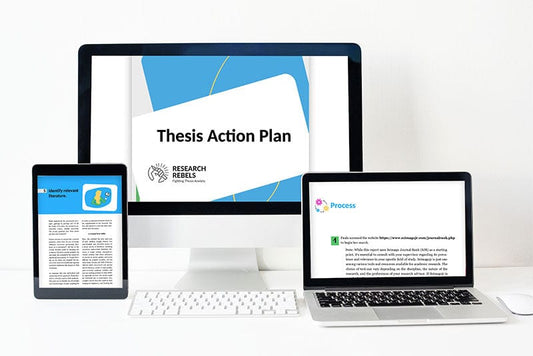Strategies for Structuring a Strong Thesis Conclusion

Crafting a strong conclusion for your thesis is crucial as it provides a final opportunity to emphasize the significance of your research and leave a lasting impression on your readers. A well-structured conclusion not only restates the thesis but also synthesizes the main points, contextualizes the argument, and presents a clear take-home message. This article outlines effective strategies for structuring a compelling thesis conclusion, ensuring coherence and cohesion, and taking the final steps to perfect your conclusion.
Key Takeaways
- Restate your thesis in the conclusion using effective techniques to reinforce your central argument.
- Synthesize major points by summarizing key arguments and integrating findings with existing literature.
- Contextualize your argument by situating your research within a broader context and discussing practical implications.
- Craft a clear take-home message that highlights the contributions of your research and suggests future directions.
- Ensure coherence and cohesion by maintaining logical flow, using transitional phrases, and reinforcing the central argument.
Restating the Thesis in the Conclusion
Restating your thesis in the conclusion is crucial for reinforcing the central argument of your work. A well-crafted restatement can remind readers of the core focus of your research and ensure that your main points are clearly understood. It's important to rephrase your thesis in a way that reflects the depth and breadth of your analysis without simply repeating it verbatim. This not only demonstrates your ability to synthesize information but also highlights the importance of crafting a strong thesis statement with evidence, focus, and engagement for academic writing.
Synthesizing Major Points
Synthesizing the major points of your thesis is crucial for reinforcing the central argument and ensuring that your reader grasps the full scope of your research. A good conclusion should do a few things:
Summarizing Key Arguments
When summarizing key arguments, you should go back to your thesis and extract the topic sentences of each main paragraph or argument. Rephrase these sentences and use them in your conclusion. This approach not only reminds the reader of what your paper actually says but also shows how the points you made and the support and examples you used fit together.
Integrating Findings with Literature
Integrating your findings with existing literature is essential for situating your research within a broader academic context. You may also refer to the introductory paragraph by using key words or parallel concepts and images that you also used in the introduction. This technique helps to pull it all together and demonstrates how your work contributes to the ongoing scholarly conversation.
Highlighting Contributions to the Field
Highlighting your contributions to the field involves explaining the relevance and significance of your work. These should include the larger implications of your work and showcase the impact it will have on society. By doing so, you not only reinforce the importance of your research but also provide a clear take-home message for your readers.
Contextualizing the Argument
Situating the Research within a Broader Context
One of the most important functions of the conclusion is to provide context for your argument. Your reader may finish your essay without a problem and understand your argument without understanding why that argument is important. Your introduction might point out the reason your topic matters, but your conclusion should also tackle this question. Here are some strategies for making your reader see why the topic is important:
- Give a list of the major arguments for your thesis (usually, these are the topic sentences of the parts of your essay).
- Explain how these parts are connected. For example, in the animal-shelter essay, you might point out that adopting a shelter dog helps more animals because your adoption fee supports the shelter, which makes your choice more socially responsible.
- Remind the readers of why the topic matters to them personally. For example, it doesn’t matter much if you believe in the mission of animal shelters, if you're not planning to get a dog; however, once you're looking for a dog, it is much more important. The conclusion of this essay might say, "Since you’re in the market for a dog, you have a major decision to make: where to get one." This will remind the reader that the argument is personally important!
Discussing Practical Implications
When contextualizing your argument, it is crucial to discuss the practical implications of your findings. This not only demonstrates the relevance of your research but also shows how it can be applied in real-world scenarios. Consider the following points:
- How can your research be used to solve existing problems?
- What are the potential benefits of your findings for practitioners in your field?
- Are there any specific recommendations you can make based on your research?
Addressing Limitations and Future Research
No research is without limitations, and acknowledging these in your conclusion can add credibility to your work. Additionally, suggesting areas for future research can provide a roadmap for others who are interested in your topic. Here are some ways to address limitations and future research:
- Identify any limitations in your study design or methodology.
- Discuss how these limitations might have affected your results.
- Suggest specific areas where further research is needed to build on your findings.
By addressing these aspects, you not only provide a comprehensive view of your research but also pave the way for future studies to expand on your work.
Crafting a Take-Home Message
Formulating a Clear Take-Home Message
A clear take-home message is essential for leaving a lasting impression on your readers. This message should encapsulate the core findings and implications of your research. The secret to crafting a killer conclusion is to keep it short, reiterate your key points with confidence, and end with a bang. Ensure that your take-home message is memorable and directly tied to your thesis statement.
Incorporating Calls to Action
Incorporating a call to action can significantly enhance the impact of your conclusion. This could be a recommendation for future research, a policy suggestion, or a practical application of your findings. By doing so, you not only highlight the relevance of your work but also engage your readers in a meaningful way. Remember, the goal is to make your readers think, "So what?" and provide them with a clear answer.
Suggesting Future Directions
Suggesting future directions is a valuable way to demonstrate the ongoing relevance of your research. This can include proposing new research questions, identifying gaps in the current literature, or suggesting practical applications of your findings. By outlining potential future directions, you show that your work is part of a larger academic conversation and encourage others to build upon your research.
Ensuring Coherence and Cohesion
Ensuring unity through cohesion and coherence requires strong topic and concluding sentences. A strong connection and smooth flow between the introduction and conclusion chapters, even though they’re on opposite ends of your document, is essential. Maintaining logical flow throughout your thesis ensures that your arguments are presented in a clear and convincing manner. Avoid phrases like "in conclusion...," "in summary...," or "in closing...." These phrases can be useful, even welcome, in oral presentations. But readers can see by the tell-tale section heading and number of pages remaining to read, when an essay is about to end. You'll irritate your readers if you belabor the obvious.
Final Steps in Thesis Conclusion
Reviewing and Revising the Conclusion
Once you have drafted your conclusion, it is crucial to review and revise it meticulously. Ensure that your conclusion succinctly encapsulates your main findings and aligns with the objectives stated in your introduction. Avoid introducing new information or arguments at this stage. Instead, focus on refining the clarity and coherence of your summary.
Seeking Feedback from Advisors
Engage with your advisors and peers to gather constructive feedback on your conclusion. Their insights can help you identify any gaps or areas that need further clarification. Remember, feedback is an invaluable part of the writing process and can significantly enhance the quality of your work.
Preparing for Final Submission
Before submitting your thesis, ensure that all formatting and citation guidelines have been meticulously followed. Double-check for any grammatical or typographical errors. A well-polished conclusion not only reinforces the strength of your argument but also leaves a lasting impression on your readers.
As you reach the final steps in your thesis conclusion, it's crucial to ensure that every detail is meticulously addressed. If you're feeling overwhelmed or unsure about how to proceed, our step-by-step Thesis Action Plan can guide you through the process with ease. Don't let stress and anxiety hold you back. Visit our website to claim your special offer now and transform your thesis writing experience.
Conclusion
In conclusion, structuring a strong thesis conclusion is a critical aspect of academic writing that encapsulates the essence of your research. By restating the thesis, synthesizing key points, and situating your work within a broader context, you provide a coherent and impactful closure to your study. This not only reinforces the significance of your findings but also underscores their contribution to the field. A well-crafted conclusion leaves a lasting impression on the reader, highlighting the relevance and implications of your research. As such, investing time and effort into writing a comprehensive conclusion is indispensable for the overall success of your thesis.
Frequently Asked Questions
What is the importance of restating the thesis in the conclusion?
Restating the thesis in the conclusion reinforces the main argument and reminds the reader of the core focus of the research. It helps to tie all the major points together and provides a sense of closure.
How can I effectively restate my thesis without sounding repetitive?
To restate your thesis effectively, use different wording and structure while maintaining the original meaning. Summarize the essence of your thesis in a fresh way that reflects the insights gained from your research.
What are some common mistakes to avoid when writing a thesis conclusion?
Common mistakes include introducing new information, failing to summarize key arguments, and neglecting to address the broader implications of the research. It's also important to avoid a conclusion that is too short or too long.
How do I synthesize major points in my thesis conclusion?
To synthesize major points, summarize the key arguments presented in your thesis, integrate your findings with existing literature, and highlight the contributions your research makes to the field. This helps to demonstrate the significance of your work.
Why is it important to contextualize the argument in the conclusion?
Contextualizing the argument situates your research within a broader context, showing its relevance and implications. Discussing practical applications and addressing limitations provides a comprehensive understanding of the research's impact.
What are some final steps to take before submitting my thesis?
Final steps include reviewing and revising the conclusion, seeking feedback from advisors, and ensuring that the entire thesis is coherent and cohesive. Preparing for final submission also involves checking for any formatting or citation errors.
Strategies for Structuring a Strong Thesis Conclusion

Crafting a strong conclusion for your thesis is crucial as it provides a final opportunity to emphasize the significance of your research and leave a lasting impression on your readers. A well-structured conclusion not only restates the thesis but also synthesizes the main points, contextualizes the argument, and presents a clear take-home message. This article outlines effective strategies for structuring a compelling thesis conclusion, ensuring coherence and cohesion, and taking the final steps to perfect your conclusion.
Key Takeaways
- Restate your thesis in the conclusion using effective techniques to reinforce your central argument.
- Synthesize major points by summarizing key arguments and integrating findings with existing literature.
- Contextualize your argument by situating your research within a broader context and discussing practical implications.
- Craft a clear take-home message that highlights the contributions of your research and suggests future directions.
- Ensure coherence and cohesion by maintaining logical flow, using transitional phrases, and reinforcing the central argument.
Restating the Thesis in the Conclusion
Restating your thesis in the conclusion is crucial for reinforcing the central argument of your work. A well-crafted restatement can remind readers of the core focus of your research and ensure that your main points are clearly understood. It's important to rephrase your thesis in a way that reflects the depth and breadth of your analysis without simply repeating it verbatim. This not only demonstrates your ability to synthesize information but also highlights the importance of crafting a strong thesis statement with evidence, focus, and engagement for academic writing.
Synthesizing Major Points
Synthesizing the major points of your thesis is crucial for reinforcing the central argument and ensuring that your reader grasps the full scope of your research. A good conclusion should do a few things:
Summarizing Key Arguments
When summarizing key arguments, you should go back to your thesis and extract the topic sentences of each main paragraph or argument. Rephrase these sentences and use them in your conclusion. This approach not only reminds the reader of what your paper actually says but also shows how the points you made and the support and examples you used fit together.
Integrating Findings with Literature
Integrating your findings with existing literature is essential for situating your research within a broader academic context. You may also refer to the introductory paragraph by using key words or parallel concepts and images that you also used in the introduction. This technique helps to pull it all together and demonstrates how your work contributes to the ongoing scholarly conversation.
Highlighting Contributions to the Field
Highlighting your contributions to the field involves explaining the relevance and significance of your work. These should include the larger implications of your work and showcase the impact it will have on society. By doing so, you not only reinforce the importance of your research but also provide a clear take-home message for your readers.
Contextualizing the Argument
Situating the Research within a Broader Context
One of the most important functions of the conclusion is to provide context for your argument. Your reader may finish your essay without a problem and understand your argument without understanding why that argument is important. Your introduction might point out the reason your topic matters, but your conclusion should also tackle this question. Here are some strategies for making your reader see why the topic is important:
- Give a list of the major arguments for your thesis (usually, these are the topic sentences of the parts of your essay).
- Explain how these parts are connected. For example, in the animal-shelter essay, you might point out that adopting a shelter dog helps more animals because your adoption fee supports the shelter, which makes your choice more socially responsible.
- Remind the readers of why the topic matters to them personally. For example, it doesn’t matter much if you believe in the mission of animal shelters, if you're not planning to get a dog; however, once you're looking for a dog, it is much more important. The conclusion of this essay might say, "Since you’re in the market for a dog, you have a major decision to make: where to get one." This will remind the reader that the argument is personally important!
Discussing Practical Implications
When contextualizing your argument, it is crucial to discuss the practical implications of your findings. This not only demonstrates the relevance of your research but also shows how it can be applied in real-world scenarios. Consider the following points:
- How can your research be used to solve existing problems?
- What are the potential benefits of your findings for practitioners in your field?
- Are there any specific recommendations you can make based on your research?
Addressing Limitations and Future Research
No research is without limitations, and acknowledging these in your conclusion can add credibility to your work. Additionally, suggesting areas for future research can provide a roadmap for others who are interested in your topic. Here are some ways to address limitations and future research:
- Identify any limitations in your study design or methodology.
- Discuss how these limitations might have affected your results.
- Suggest specific areas where further research is needed to build on your findings.
By addressing these aspects, you not only provide a comprehensive view of your research but also pave the way for future studies to expand on your work.
Crafting a Take-Home Message
Formulating a Clear Take-Home Message
A clear take-home message is essential for leaving a lasting impression on your readers. This message should encapsulate the core findings and implications of your research. The secret to crafting a killer conclusion is to keep it short, reiterate your key points with confidence, and end with a bang. Ensure that your take-home message is memorable and directly tied to your thesis statement.
Incorporating Calls to Action
Incorporating a call to action can significantly enhance the impact of your conclusion. This could be a recommendation for future research, a policy suggestion, or a practical application of your findings. By doing so, you not only highlight the relevance of your work but also engage your readers in a meaningful way. Remember, the goal is to make your readers think, "So what?" and provide them with a clear answer.
Suggesting Future Directions
Suggesting future directions is a valuable way to demonstrate the ongoing relevance of your research. This can include proposing new research questions, identifying gaps in the current literature, or suggesting practical applications of your findings. By outlining potential future directions, you show that your work is part of a larger academic conversation and encourage others to build upon your research.
Ensuring Coherence and Cohesion
Ensuring unity through cohesion and coherence requires strong topic and concluding sentences. A strong connection and smooth flow between the introduction and conclusion chapters, even though they’re on opposite ends of your document, is essential. Maintaining logical flow throughout your thesis ensures that your arguments are presented in a clear and convincing manner. Avoid phrases like "in conclusion...," "in summary...," or "in closing...." These phrases can be useful, even welcome, in oral presentations. But readers can see by the tell-tale section heading and number of pages remaining to read, when an essay is about to end. You'll irritate your readers if you belabor the obvious.
Final Steps in Thesis Conclusion
Reviewing and Revising the Conclusion
Once you have drafted your conclusion, it is crucial to review and revise it meticulously. Ensure that your conclusion succinctly encapsulates your main findings and aligns with the objectives stated in your introduction. Avoid introducing new information or arguments at this stage. Instead, focus on refining the clarity and coherence of your summary.
Seeking Feedback from Advisors
Engage with your advisors and peers to gather constructive feedback on your conclusion. Their insights can help you identify any gaps or areas that need further clarification. Remember, feedback is an invaluable part of the writing process and can significantly enhance the quality of your work.
Preparing for Final Submission
Before submitting your thesis, ensure that all formatting and citation guidelines have been meticulously followed. Double-check for any grammatical or typographical errors. A well-polished conclusion not only reinforces the strength of your argument but also leaves a lasting impression on your readers.
As you reach the final steps in your thesis conclusion, it's crucial to ensure that every detail is meticulously addressed. If you're feeling overwhelmed or unsure about how to proceed, our step-by-step Thesis Action Plan can guide you through the process with ease. Don't let stress and anxiety hold you back. Visit our website to claim your special offer now and transform your thesis writing experience.
Conclusion
In conclusion, structuring a strong thesis conclusion is a critical aspect of academic writing that encapsulates the essence of your research. By restating the thesis, synthesizing key points, and situating your work within a broader context, you provide a coherent and impactful closure to your study. This not only reinforces the significance of your findings but also underscores their contribution to the field. A well-crafted conclusion leaves a lasting impression on the reader, highlighting the relevance and implications of your research. As such, investing time and effort into writing a comprehensive conclusion is indispensable for the overall success of your thesis.
Frequently Asked Questions
What is the importance of restating the thesis in the conclusion?
Restating the thesis in the conclusion reinforces the main argument and reminds the reader of the core focus of the research. It helps to tie all the major points together and provides a sense of closure.
How can I effectively restate my thesis without sounding repetitive?
To restate your thesis effectively, use different wording and structure while maintaining the original meaning. Summarize the essence of your thesis in a fresh way that reflects the insights gained from your research.
What are some common mistakes to avoid when writing a thesis conclusion?
Common mistakes include introducing new information, failing to summarize key arguments, and neglecting to address the broader implications of the research. It's also important to avoid a conclusion that is too short or too long.
How do I synthesize major points in my thesis conclusion?
To synthesize major points, summarize the key arguments presented in your thesis, integrate your findings with existing literature, and highlight the contributions your research makes to the field. This helps to demonstrate the significance of your work.
Why is it important to contextualize the argument in the conclusion?
Contextualizing the argument situates your research within a broader context, showing its relevance and implications. Discussing practical applications and addressing limitations provides a comprehensive understanding of the research's impact.
What are some final steps to take before submitting my thesis?
Final steps include reviewing and revising the conclusion, seeking feedback from advisors, and ensuring that the entire thesis is coherent and cohesive. Preparing for final submission also involves checking for any formatting or citation errors.
Strategies for Structuring a Strong Thesis Conclusion

Crafting a strong conclusion for your thesis is crucial as it provides a final opportunity to emphasize the significance of your research and leave a lasting impression on your readers. A well-structured conclusion not only restates the thesis but also synthesizes the main points, contextualizes the argument, and presents a clear take-home message. This article outlines effective strategies for structuring a compelling thesis conclusion, ensuring coherence and cohesion, and taking the final steps to perfect your conclusion.
Key Takeaways
- Restate your thesis in the conclusion using effective techniques to reinforce your central argument.
- Synthesize major points by summarizing key arguments and integrating findings with existing literature.
- Contextualize your argument by situating your research within a broader context and discussing practical implications.
- Craft a clear take-home message that highlights the contributions of your research and suggests future directions.
- Ensure coherence and cohesion by maintaining logical flow, using transitional phrases, and reinforcing the central argument.
Restating the Thesis in the Conclusion
Restating your thesis in the conclusion is crucial for reinforcing the central argument of your work. A well-crafted restatement can remind readers of the core focus of your research and ensure that your main points are clearly understood. It's important to rephrase your thesis in a way that reflects the depth and breadth of your analysis without simply repeating it verbatim. This not only demonstrates your ability to synthesize information but also highlights the importance of crafting a strong thesis statement with evidence, focus, and engagement for academic writing.
Synthesizing Major Points
Synthesizing the major points of your thesis is crucial for reinforcing the central argument and ensuring that your reader grasps the full scope of your research. A good conclusion should do a few things:
Summarizing Key Arguments
When summarizing key arguments, you should go back to your thesis and extract the topic sentences of each main paragraph or argument. Rephrase these sentences and use them in your conclusion. This approach not only reminds the reader of what your paper actually says but also shows how the points you made and the support and examples you used fit together.
Integrating Findings with Literature
Integrating your findings with existing literature is essential for situating your research within a broader academic context. You may also refer to the introductory paragraph by using key words or parallel concepts and images that you also used in the introduction. This technique helps to pull it all together and demonstrates how your work contributes to the ongoing scholarly conversation.
Highlighting Contributions to the Field
Highlighting your contributions to the field involves explaining the relevance and significance of your work. These should include the larger implications of your work and showcase the impact it will have on society. By doing so, you not only reinforce the importance of your research but also provide a clear take-home message for your readers.
Contextualizing the Argument
Situating the Research within a Broader Context
One of the most important functions of the conclusion is to provide context for your argument. Your reader may finish your essay without a problem and understand your argument without understanding why that argument is important. Your introduction might point out the reason your topic matters, but your conclusion should also tackle this question. Here are some strategies for making your reader see why the topic is important:
- Give a list of the major arguments for your thesis (usually, these are the topic sentences of the parts of your essay).
- Explain how these parts are connected. For example, in the animal-shelter essay, you might point out that adopting a shelter dog helps more animals because your adoption fee supports the shelter, which makes your choice more socially responsible.
- Remind the readers of why the topic matters to them personally. For example, it doesn’t matter much if you believe in the mission of animal shelters, if you're not planning to get a dog; however, once you're looking for a dog, it is much more important. The conclusion of this essay might say, "Since you’re in the market for a dog, you have a major decision to make: where to get one." This will remind the reader that the argument is personally important!
Discussing Practical Implications
When contextualizing your argument, it is crucial to discuss the practical implications of your findings. This not only demonstrates the relevance of your research but also shows how it can be applied in real-world scenarios. Consider the following points:
- How can your research be used to solve existing problems?
- What are the potential benefits of your findings for practitioners in your field?
- Are there any specific recommendations you can make based on your research?
Addressing Limitations and Future Research
No research is without limitations, and acknowledging these in your conclusion can add credibility to your work. Additionally, suggesting areas for future research can provide a roadmap for others who are interested in your topic. Here are some ways to address limitations and future research:
- Identify any limitations in your study design or methodology.
- Discuss how these limitations might have affected your results.
- Suggest specific areas where further research is needed to build on your findings.
By addressing these aspects, you not only provide a comprehensive view of your research but also pave the way for future studies to expand on your work.
Crafting a Take-Home Message
Formulating a Clear Take-Home Message
A clear take-home message is essential for leaving a lasting impression on your readers. This message should encapsulate the core findings and implications of your research. The secret to crafting a killer conclusion is to keep it short, reiterate your key points with confidence, and end with a bang. Ensure that your take-home message is memorable and directly tied to your thesis statement.
Incorporating Calls to Action
Incorporating a call to action can significantly enhance the impact of your conclusion. This could be a recommendation for future research, a policy suggestion, or a practical application of your findings. By doing so, you not only highlight the relevance of your work but also engage your readers in a meaningful way. Remember, the goal is to make your readers think, "So what?" and provide them with a clear answer.
Suggesting Future Directions
Suggesting future directions is a valuable way to demonstrate the ongoing relevance of your research. This can include proposing new research questions, identifying gaps in the current literature, or suggesting practical applications of your findings. By outlining potential future directions, you show that your work is part of a larger academic conversation and encourage others to build upon your research.
Ensuring Coherence and Cohesion
Ensuring unity through cohesion and coherence requires strong topic and concluding sentences. A strong connection and smooth flow between the introduction and conclusion chapters, even though they’re on opposite ends of your document, is essential. Maintaining logical flow throughout your thesis ensures that your arguments are presented in a clear and convincing manner. Avoid phrases like "in conclusion...," "in summary...," or "in closing...." These phrases can be useful, even welcome, in oral presentations. But readers can see by the tell-tale section heading and number of pages remaining to read, when an essay is about to end. You'll irritate your readers if you belabor the obvious.
Final Steps in Thesis Conclusion
Reviewing and Revising the Conclusion
Once you have drafted your conclusion, it is crucial to review and revise it meticulously. Ensure that your conclusion succinctly encapsulates your main findings and aligns with the objectives stated in your introduction. Avoid introducing new information or arguments at this stage. Instead, focus on refining the clarity and coherence of your summary.
Seeking Feedback from Advisors
Engage with your advisors and peers to gather constructive feedback on your conclusion. Their insights can help you identify any gaps or areas that need further clarification. Remember, feedback is an invaluable part of the writing process and can significantly enhance the quality of your work.
Preparing for Final Submission
Before submitting your thesis, ensure that all formatting and citation guidelines have been meticulously followed. Double-check for any grammatical or typographical errors. A well-polished conclusion not only reinforces the strength of your argument but also leaves a lasting impression on your readers.
As you reach the final steps in your thesis conclusion, it's crucial to ensure that every detail is meticulously addressed. If you're feeling overwhelmed or unsure about how to proceed, our step-by-step Thesis Action Plan can guide you through the process with ease. Don't let stress and anxiety hold you back. Visit our website to claim your special offer now and transform your thesis writing experience.
Conclusion
In conclusion, structuring a strong thesis conclusion is a critical aspect of academic writing that encapsulates the essence of your research. By restating the thesis, synthesizing key points, and situating your work within a broader context, you provide a coherent and impactful closure to your study. This not only reinforces the significance of your findings but also underscores their contribution to the field. A well-crafted conclusion leaves a lasting impression on the reader, highlighting the relevance and implications of your research. As such, investing time and effort into writing a comprehensive conclusion is indispensable for the overall success of your thesis.
Frequently Asked Questions
What is the importance of restating the thesis in the conclusion?
Restating the thesis in the conclusion reinforces the main argument and reminds the reader of the core focus of the research. It helps to tie all the major points together and provides a sense of closure.
How can I effectively restate my thesis without sounding repetitive?
To restate your thesis effectively, use different wording and structure while maintaining the original meaning. Summarize the essence of your thesis in a fresh way that reflects the insights gained from your research.
What are some common mistakes to avoid when writing a thesis conclusion?
Common mistakes include introducing new information, failing to summarize key arguments, and neglecting to address the broader implications of the research. It's also important to avoid a conclusion that is too short or too long.
How do I synthesize major points in my thesis conclusion?
To synthesize major points, summarize the key arguments presented in your thesis, integrate your findings with existing literature, and highlight the contributions your research makes to the field. This helps to demonstrate the significance of your work.
Why is it important to contextualize the argument in the conclusion?
Contextualizing the argument situates your research within a broader context, showing its relevance and implications. Discussing practical applications and addressing limitations provides a comprehensive understanding of the research's impact.
What are some final steps to take before submitting my thesis?
Final steps include reviewing and revising the conclusion, seeking feedback from advisors, and ensuring that the entire thesis is coherent and cohesive. Preparing for final submission also involves checking for any formatting or citation errors.

















